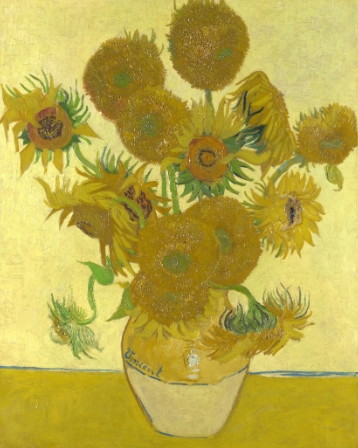Vincent van Gogh’s iconic Sunflower painting has captured the hearts of art lovers around the world for over a century. But what is the story behind this masterpiece?
Inspiration and Creation
Van Gogh painted his Sunflower series in 1888 while living in Arles, France. The vibrant yellow blooms were a common sight in the region, and the artist was inspired by their simple beauty. He famously said, “I am looking for a painting that everyone in the world will be able to understand.”
Symbolism and Meaning
The Sunflowers are more than just a pretty picture – they hold deep symbolic meaning for van Gogh. The flowers are a symbol of friendship, as the artist intended them to be a gift for his friend and fellow artist Paul Gauguin. They also represent the cycle of life and the fleeting nature of beauty.
Technique and Style
Van Gogh’s Sunflower paintings are known for their bold colors and thick, expressive brushstrokes. The artist used complementary colors like yellow and blue to create a sense of harmony and balance in the composition. His unique style and use of light and shadow give the flowers a sense of depth and vitality.
Legacy and Impact
Van Gogh’s Sunflower paintings have become some of the most recognized and beloved works of art in the world. They have inspired countless artists and continue to captivate audiences with their beauty and symbolism. The Sunflowers are a testament to van Gogh’s genius and his ability to capture the essence of beauty in the natural world.
Unlocking the Beauty
In unlocking the beauty of van Gogh’s Sunflower painting, we are reminded of the power of art to transcend time and touch our souls. The vibrant colors, expressive brushstrokes, and deep symbolism all come together to create a masterpiece that will continue to inspire and delight for generations to come.


